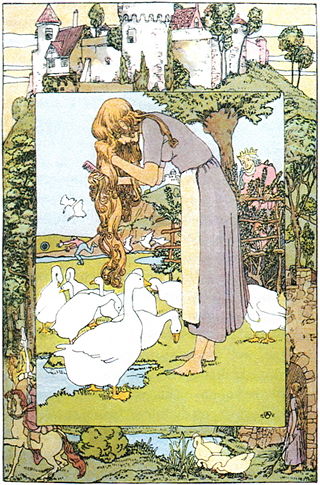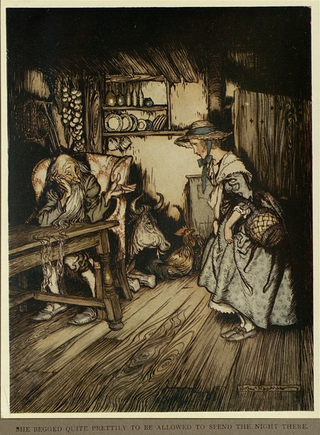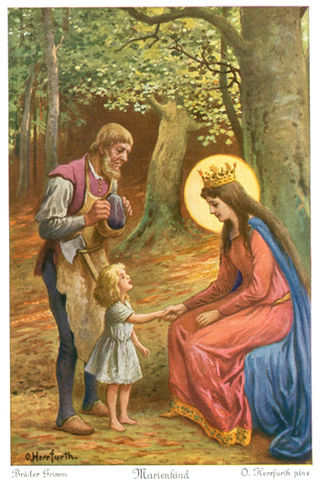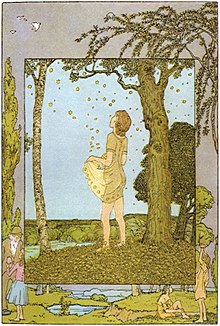
"The Golden Goose" is a fairy tale collected by the Brothers Grimm.

"The Goose Girl" is a German fairy tale collected by the Brothers Grimm and first published in Grimm's Fairy Tales in 1815. It is of Aarne-Thompson type 533.

"Bearskin" is a fairy tale collected by the Brothers Grimm. A variant from Sicily, "Don Giovanni de la Fortuna", was collected by Laura Gonzenbach in Sicilianische Märchen and included by Andrew Lang in The Pink Fairy Book. Italo Calvino included another Italian version, "The Devil's Breeches" from Bologna, in his Italian Folktales.

"The Three Little Men in the Wood" or "The Three Little Gnomes in the Forest" is a German fairy tale collected in 1812 by the Brothers Grimm in Grimm's Fairy Tales. Andrew Lang included it in The Red Fairy Book (1890) as "The Three Dwarfs," and a version of the tale appears in A Book of Dwarfs (1964) by Ruth Manning-Sanders.

"The Hut in the Forest" is a German fairy tale collected by the Brothers Grimm. Andrew Lang included it in The Pink Fairy Book (1897). It is Aarne-Thompson type 431.
"The Willful Child" is a German fairy tale collected by the Brothers Grimm as tale number 117. As a legend, it is widely distributed in Germany.
"The Spirit in the Bottle" is a German fairy tale collected by the Brothers Grimm, tale number 99. In the Aarne–Thompson–Uther Index, it is type 331.
"Old Sultan" is a German fairy tale collected by the Brothers Grimm.
"The Riddle" is a German fairy tale collected by the Brothers Grimm in Grimm's Fairy Tales in 1819. It is of Aarne-Thompson type 851.

"The Twelve Brothers" is a German fairy tale collected by the Brothers Grimm in Grimm's Fairy Tales. Andrew Lang included it in The Red Fairy Book.

Finette Cendron is a French literary fairy tale written by Madame d'Aulnoy.
"The True Bride" or "The True Sweetheart" is a German fairy tale collected by the Brothers Grimm in Grimm's Fairy Tales as tale 186.
"The Griffin" is a German fairy tale collected by the Brothers Grimm in Grimm's Fairy Tales.
"The Pink" or "The Carnation" is a German fairy tale collected by the Brothers Grimm in Grimm's Fairy Tales as tale number 76.

"The Two Kings' Children" is a German fairy tale collected by the Brothers Grimm in Grimm's Fairy Tales, tale number 113.

"Mary's Child" is a German fairy tale collected by the Brothers Grimm in Grimm's Fairy Tales in 1812. It is of Aarne-Thompson type 710.

"Godfather Death" is a German fairy tale collected by the Brothers Grimm and first published in 1812. It is a tale of Aarne-Thompson type 332.

"The Gnome" is a German fairy tale collected by the Brothers Grimm in Grimm's Fairy Tales, tale number 91.
"Frederick and Catherine" is a German fairy tale collected by the Brothers Grimm in Grimm's Fairy Tales, number 59.
"The Little Peasant" is a German fairy tale collected by the Brothers Grimm in Grimm's Fairy Tales, number 61.












